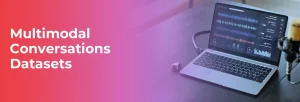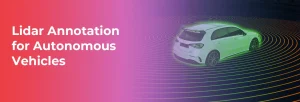- Introduction
- Why Multilingual Audio Datasets Matter
- What Is a Multilingual Audio Dataset?
- Challenges in Multilingual Speech Dataset Development
- Real-Life Case Study
- How Enterprises Can Leverage Multilingual Audio Datasets
- Buy vs. Build: A Comparative View
- Applications of a Multilingual Audio Dataset Across Industries
- Conclusion
- Need Custom Multilingual Audio Datasets?
- FAQ
Multilingual Audio Dataset for TTS and Cross-Language AI Models
Introduction
In today’s increasingly connected global landscape, the need for machines to understand and communicate across languages is more important than ever. From multilingual voice assistants to cross-border customer support automation, speech technology powered by AI is reshaping user experiences across industries.
At the core of these innovations lie high-quality, diverse multilingual audio datasets—the lifeblood for training Text-to-Speech (TTS) systems, cross-language AI models, and a wide range of voice-based applications. This article delves into the full scope of developing multilingual audio datasets, focusing on TTS dataset development, audio datasets for machine learning, and their role in the future of multilingual speech dataset solutions.
Why Multilingual Audio Datasets Matter
The Global Rise of Voice and Speech AI
Voice interfaces are transforming how users interact with technology, from smart speakers to automotive assistants and mobile apps. With 7,000+ spoken languages globally, enterprises are under pressure to ensure inclusivity and accessibility.
Key Use Cases:
- Virtual Assistants (e.g., Alexa, Siri, Google Assistant)
- AI-powered Customer Support
- Multilingual IVR Systems
- E-learning Platforms
- Assistive Technologies (for visually impaired users)
What Is a Multilingual Audio Dataset?
A multilingual audio dataset comprises voice recordings and corresponding text annotations in multiple languages. These datasets are essential for training and fine-tuning:
- Text-to-Speech (TTS) models
- Automatic Speech Recognition (ASR) models
- Voice Cloning and Synthesis
- Cross-language AI models
Key Characteristics of a Quality Speech Dataset for AI:
- Native and non-native speaker coverage
- Balanced gender and age diversity
- Clean audio format (44.1 kHz / 16-bit WAV)
- Phonetically rich sentence coverage
- Accurate timestamped transcriptions
Challenges in Multilingual Speech Dataset Development
Creating high-performance TTS datasets and speech datasets for AI involves multiple complexities:
| Challenge | Description |
|---|---|
| Language Diversity | Regional dialects, accents, and phonetic variations |
| Speaker Demographics | Age, gender, and geography influence model performance |
| Data Quality | Background noise, poor recording devices impact outcomes |
| Scalability | Gathering thousands of hours of annotated speech is resource-intensive |
| Cultural Sensitivity | Offensive or culturally inappropriate content can derail AI training |
Elements of a High-Quality Text-to-Speech Dataset
To ensure models deliver natural, human-like output, the dataset must be tailored to the desired application and user demographic.
Audio Dataset Parameters:
- Sampling Rate: 44.1 kHz or 48 kHz
- Format: WAV (uncompressed)
- Channels: Mono preferred for clarity
- Loudness normalization: -23 LUFS standard
Transcription Attributes:
- Accurate timestamps
- Standard orthography
- Diarization (speaker identification if multi-speaker)
- Sentence-level and phoneme-level alignment
Best Practices for Audio Datasets for Machine Learning
1. Speaker Diversity: Include male/female, regional accents, and age groups.
2. Balanced Scripts: Use domain-specific vocabulary if targeting a use case (e.g., finance, healthcare).
3. Noise Variability: Mix studio and environmental audio to ensure model robustness.
4. Multimodal Pairing: Combine audio with metadata (e.g., speaker ID, emotion) for enhanced training.
5. Linguistic Review: Localize and validate scripts with native linguists to ensure phonetic coverage.
Real-Life Case Study
Below are the real-life case studies, through which you can better understand the concept of a multilingual speech dataset:
Common Voice – Building an Inclusive Multilingual TTS Model
One of the leading companies in the Market developed a project named “Common Voice.” The project was designed to create Open-Source Multilingual audio datasets for TTS (Text-To-Speech) & ASR (Automatic-Speech-Recognition).
Challenges faced by the company: TTS Systems are biased towards languages like English. As the voice assistant or translators are trained heavily on the English data. But to build something similar in languages like Kiswahili, Welsh, or Kinyarwanda? These languages often lack sufficient voice data, which is crucial for building systems like voice assistants or translators.
To overcome this challenge. The company came up with “Common-voice“, a crowdsourced platform where people from around the world will donate their voices by reading scripts, books, or sentences out loud in their native languages.
This was a smart move, how? For two reasons:
- It made the dataset diverse, with contributions from people of different ages, accents, and genders.
- It helped cover low-resource languages that are often ignored in commercial AI development.
What was the impact of this?
- Dataset with over 100+ languages and dialects, contributed to by more than 20K people globally.
- Data collected has been used to build more inclusive voice models, especially for underrepresented languages.
Why does it matter?
This project enabled researchers and AI engineers worldwide to develop various voice applications in native languages. Instead of serving the people who speak English or a few other languages, voice AI can now start conversations for everyone in their native language.
How Enterprises Can Leverage Multilingual Audio Datasets
Choosing the Right Dataset Development Partner
Enterprises often face a build-vs-buy decision. Partnering with a specialized data provider ensures scalability, compliance, and accuracy.
Evaluation Checklist:
- Proven experience across 20+ languages
- Native speaker sourcing and ethical recording practices
- ISO 27001 / GDPR-compliant data handling
- In-house linguistic QA and annotation teams
- Customizable pipeline (e.g., accent/dialect selection, use-case targeting)
Buy vs. Build: A Comparative View
| Aspect | Build In-House | Partner with Provider |
|---|---|---|
| Cost | High (infra, talent) | Predictable |
| Time | 6–12 months+ | 2–6 weeks |
| Quality | Varies | Industry standard |
| Scalability | Limited by internal bandwidth | Global crowd access |
| Language Coverage | Limited | Extensive (50+ languages) |
Applications of a Multilingual Audio Dataset Across Industries
| Industry | Use Case | Outcome |
|---|---|---|
| Retail | Voice-based product search | Multilingual customer engagement |
| Healthcare | TTS for patient instructions | Accessibility improvement |
| Banking | Conversational AI for IVRs | Faster query resolution |
| EdTech | Language learning apps | Authentic pronunciation modeling |
| Automotive | In-car voice assistants | Driver safety and UX |
Future Trends in Cross-Language AI Models
1. Zero-Shot and Few-Shot TTS Models
Future TTS dataset development will rely on transfer learning, enabling the generation of speech in new languages with minimal data.
2. Emotion and Prosody Modeling
Multilingual audio datasets are now being annotated with emotional tones, helping models sound more empathetic and natural.
3. Low-Resource Language Inclusion
Efforts like UNESCO and Open Speech Corp are focusing on building audio datasets for indigenous and underrepresented languages.
4. Real-Time Voice Translation
Cross-language AI models will enable real-time voice translation between speakers of different languages—a breakthrough for travel, diplomacy, and global events.
Conclusion
For enterprises aiming to scale globally, building or accessing a high-quality multilingual audio dataset is no longer optional—it’s a strategic imperative.
Whether you’re training a TTS dataset for a voice assistant or fine-tuning speech datasets for AI in customer support, investing in the right data from the outset sets the foundation for future-ready, inclusive technology.
Need Custom Multilingual Audio Datasets?
Let’s talk! Whether you need a 10-language TTS dataset for global markets or a domain-specific speech dataset for AI, our team of linguists, annotators, and project managers can deliver tailored solutions.
Contact us today to accelerate your voice AI pipeline.
FAQ
At Macgence, we offer fully customized multilingual audio datasets tailored to specific use cases like Text-to-Speech (TTS), Automatic Speech Recognition (ASR), voice biometrics, and cross-language AI models. Our datasets span over 50+ global languages and include variations in dialects, age groups, genders, and acoustic environments. We also support industry-specific datasets (e.g., healthcare, legal, e-commerce) for more domain-relevant model training.
Quality and diversity are at the heart of our dataset creation pipeline. We use native speakers from different regions, ensure phonetic richness in scripts, and follow stringent audio quality standards (e.g., 44.1 kHz WAV format). Every TTS dataset undergoes multi-stage linguistic review, audio validation, and annotation quality control. This guarantees that the resulting models sound natural, accurate, and regionally appropriate.
Yes, absolutely. We specialize in building multilingual speech datasets for low-resource and underrepresented languages. Macgence has access to native-speaking communities worldwide, and we manage culturally sensitive data collection with ethical sourcing and GDPR-compliant consent processes. This allows our partners to train cross-language AI models even in languages with minimal digital footprints.
Turnaround time depends on the scope and complexity of your project. For example, a 100-hour Text-to-Speech dataset in a single language with native speakers typically takes 3–5 weeks from script design to final delivery. Larger or multi-language projects may take longer, but we always offer transparent timelines, weekly progress reports, and flexible scaling with our global network of contributors.
Yes, we provide an end-to-end speech dataset for AI solutions. This includes high-quality audio recording, manual and automated transcription, phoneme-level annotation, speaker diarization, timestamping, and even emotion tagging if needed. All annotations are done by linguists trained in the target language to ensure precise alignment and accuracy.
You Might Like
October 11, 2025
Why Your AI Can’t Understand Humans: The Multimodal Conversations Datasets Gap
Your conversational AI is failing, and you probably don’t know why. It responds to words perfectly. The grammar checks out. The speed is impressive. But somehow, it keeps missing what users actually mean. The frustrated customers. The sarcastic feedback. The urgent requests are buried in casual language. Here’s what’s really happening: your AI is reading […]
October 10, 2025
Why Your Self-Driving Car Needs Perfect Vision: The LiDAR Annotation Story
Imagine you’re driving down a busy street. Your eyes are constantly scanning – pedestrians crossing, cars merging, cyclists weaving through traffic. Now imagine teaching a machine to do the same thing, except it doesn’t have eyes. It has lasers. And those lasers need to understand what they’re “seeing.” We’ve seen many product launches that aim […]
October 9, 2025
What is Synthetic Datasets? Is it real data or fake?
Picture this: You’re building the next breakthrough AI product. Your models need millions of data points to learn. But there’s a problem. You can’t access enough real-world data due to various factors, such as compliance issues, security factors, and specific needs. Privacy regulations block you. Collection costs are sky-high. And even when you get data, […]




